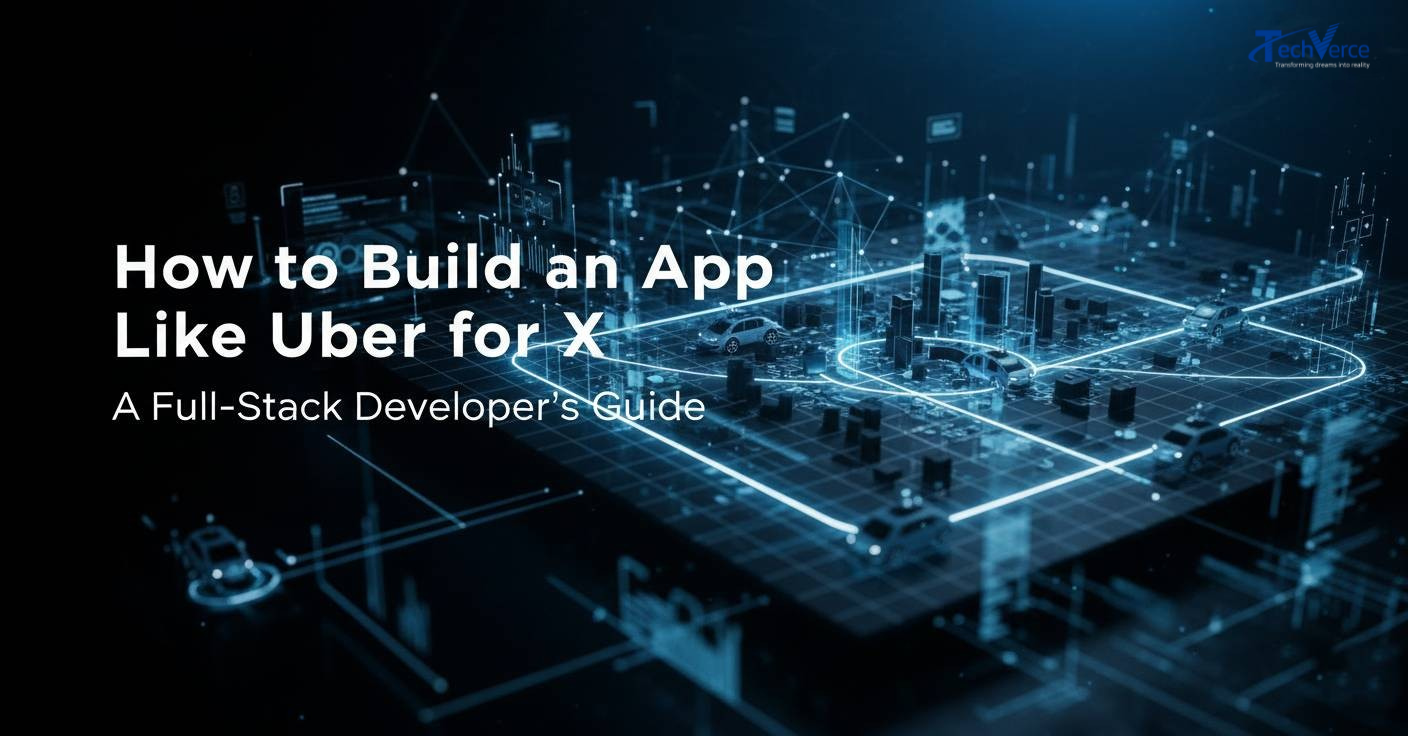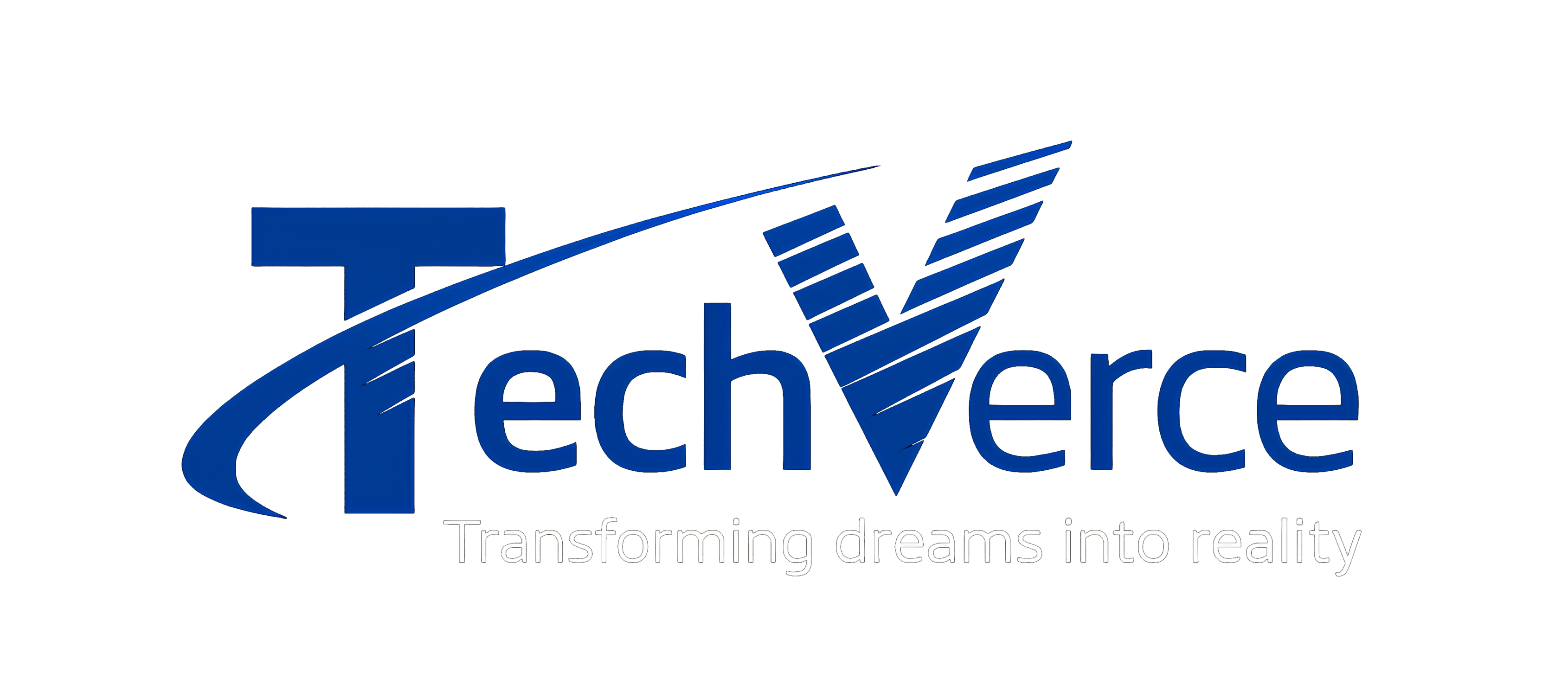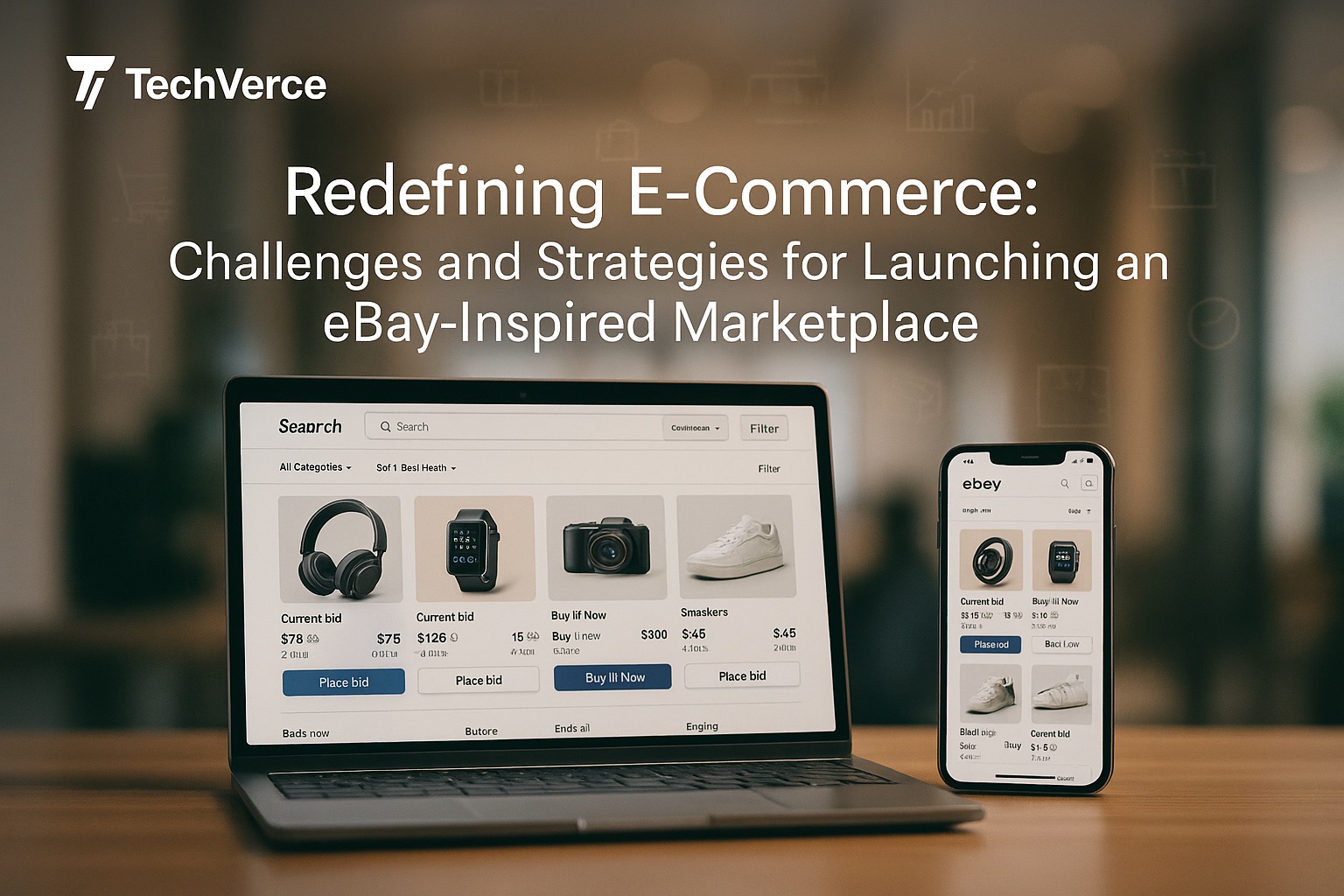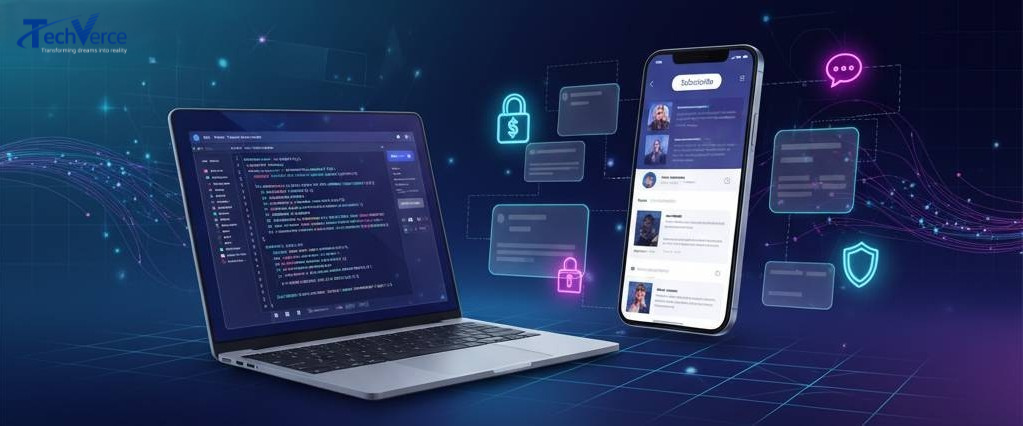
- By Tech Verce
- 26 Sep, 2025
- IT Consultancy
How to Build an App Like Uber for X – A Full-Stack Developer's Guide
This article provides a comprehensive roadmap for developers on how to build an app like Uber for X (e.g., rides, deliveries), tapping into the $149.88 billion ride-sharing market as of September 26, 2025, projected to reach $691.63 billion by 2034. It covers planning, tech stack (React Native/Node.js), development (auth, matching, payments), testing, launch, and scaling, with code snippets for real-time features.
The on-demand economy is reshaping how we access services, from rides to deliveries, and at its core is Uber—the pioneer that's set the gold standard. If you're a developer pondering how to build an app like Uber for X (where "X" could be rides, food, or any service), you're eyeing a massive opportunity. As of September 26, 2025, Uber reports 156 million monthly users, 30 million daily rides, and $43.9 billion in revenue for 2024—a 18% year-over-year increase. With 5.7 million drivers and a 72% market share in ride-hailing, Uber's model has inspired countless Uber clones worldwide. The global ride-sharing market alone is valued at $149.88 billion in 2025, projected to surge to $691.63 billion by 2034 at a CAGR of 18.5%.
Building an Uber clone isn't merely about mapping and payments—it's crafting a full-stack ecosystem for real-time matching, secure transactions, and seamless UX. This developer's guide from scratch will equip you with technical blueprints, challenges, and Uber solutions to launch your on-demand app. Whether for rides, groceries, or niche services like pet care ("Uber for X"), we'll cover ideation to scaling. For efficiency, leverage Uber solutions like TechVerce' clone scripts, which cut development time by 70% while ensuring compliance and scalability.
By the end, you'll have a roadmap to deploy your Uber clone, optimized for high-traffic, location-based services. Let's accelerate from concept to code.
Demystifying the Uber Model: Core Mechanics and Why It Works
Uber's genius lies in its tripartite ecosystem: riders, drivers, and the platform. Launched in 2009, it disrupted taxis with GPS tracking, dynamic pricing, and cashless rides. By 2025, Uber's mobility revenue hit $5.63 billion (up 30% YoY), while delivery added $3.21 billion. Key to how to build an app like Uber for X:
- Real-Time Matching: Geolocation pairs riders/drivers in seconds.
- Dynamic Pricing: Surge based on demand (up to 2x in peaks).
- Payments & Ratings: In-app wallets, 20% commission, bidirectional reviews.
- Safety Features: SOS, background checks, ride sharing.
For "Uber for X" (e.g., Uber for laundry), adapt: Replace rides with service requests. An Uber clone script from TechVerce includes pre-built modules for these, using Node.js for backend and React Native for mobile.
Market Validation: 65% of users are under 35, favoring apps for convenience. Projected ROI: At 10K users, $100K/month revenue at 20% margins.
Step 1: Ideation and Planning — Blueprint Your Uber Clone
How to build an app like Uber for X begins with a solid plan. Skip this, and your MVP flops.
Define Scope and MVP
- Core Features: User auth, map integration (Google Maps API), booking flow, driver panel, payments (Stripe), notifications (Firebase).
- For X Variant: Customize—e.g., for "Uber for Groceries," add inventory APIs.
- Tools: Use Figma for wireframes; Trello for sprints.
Market Research
- Competitors: Analyze Uber, Lyft (Uber's 72% share). Survey 200 users via Google Forms: "What frustrates you about current apps?"
- Monetization: 20–25% commission + ads. With 9.45 billion trips in 2023, scale to 1% market = millions.
- Legal: Comply with GDPR, background checks (via Checkr API).
Budget: $100K–$500K custom; $10K–$50K for Uber solutions scripts.
Timeline: 2–4 weeks.
Step 2: Tech Stack Selection — Full-Stack Foundations
Choose tools for speed and scale. Uber solutions like TechVerce' clone scripts pre-integrate these.
Frontend (Mobile/Web)
- React Native: Cross-platform apps (iOS/Android). Code for rider map:import MapView, { Marker } from 'react-native-maps'; <MapView style={styles.map} region={region}> <Marker coordinate={driverLocation} title="Driver" /> MapView>
- Web: React.js for dashboard.
Backend
- Node.js/Express: Real-time with Socket.io for tracking.
- Database: MongoDB for flexible user data; PostgreSQL for transactions.
- APIs: Google Maps for geolocation; Twilio for SMS.
Uber Clone Integration
TechVerce' Uber solutions provide a ready Node.js boilerplate with Socket.io for live ETAs, saving 60% coding time.
Step 3: Development — Coding the Uber-Like Experience
Dive into building. Use an Uber clone script to prototype fast.
User Authentication & Profiles
- JWT for secure login. Backend route:app.post('/login', async (req, res) => { const user = await User.findOne({ email: req.body.email }); if (user && await bcrypt.compare(req.body.password, user.password)) { const token = jwt.sign({ id: user._id }, process.env.JWT_SECRET); res.json({ token }); } });
- Profiles: Rider/driver modes with ratings.
Real-Time Features
- Geolocation: Expo Location for mobile coords.
- Matching Engine: Use Redis for queueing; algorithm: Nearest driver within 5km.
- Payments: Stripe Checkout for fares.
For "Uber for X," swap rides for service bids—e.g., plumber matching.
Development: 8–12 weeks; test with 100 beta users.
Step 4: Testing, Security, and Compliance — Bulletproof Your App
Rigor is non-negotiable for trust.
Testing
- Functional: Postman for APIs; Appium for mobile flows.
- Load: 10K simulated rides with Artillery.io.
- Security: OWASP scans; encrypt locations.
Key Challenges & Uber Solutions
- Challenge: Surge Pricing Fraud: Dynamic algo spikes unfairly. Solution: Uber clone scripts with transparent ML models.
- Challenge: Driver Safety: No-shows or disputes. Solution: Uber solutions with SOS integration and auto-matching backups.
- Compliance: GDPR for data; background checks.
Allocate 3–5 weeks; 15% budget.
Step 5: Launch, Marketing, and Scaling — From MVP to Market Leader
Launch Prep
- App Stores: ASO with "Uber clone app for [X]."
- Analytics: Mixpanel for user funnels.
Marketing
- SEO: Content on how to build an app like Uber for X (10K searches/month).
- Paid: Google Ads targeting "on-demand services" ($1–$3 CPC).
- Partnerships: Local businesses for "Uber for X" pilots.
Scaling
- Microservices for growth; Kubernetes for orchestration.
- Metrics: Aim for 1M rides/year like early Uber.
Post-launch: Monitor churn (target <5%).
Real-World Insights: Uber Clone Success Stories
- Bolt: European Uber clone, 100M+ rides, $500M revenue.
- Didi: China giant, 493M users via localized Uber solutions.
- TechVerce Client: "Uber for Pets" app hit 50K users in 6 months.
Future-Proofing Your Uber Clone
By 2030, EV integrations and AI routing will dominate. Update your Uber solutions with modular scripts.
Conclusion: Accelerate Your On-Demand Vision
How to build an app like Uber for X is a full-stack odyssey of innovation and execution. With Uber's 156M users as inspiration, leverage Uber clone scripts and Uber solutions from TechVerce to launch faster and smarter. From planning to scaling, this guide arms you for success in the $149.88B market. Code on, and ride the wave.




